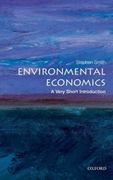



















Suppose the demand for Good X is given by: QDx = 100 - 2Px + 2Py - 41. Where Px is the price of Good X, Py is the price of Good Y and I is income. Good X and Good Y are Choose... Good X is Choose... good.Suppose the demand function for Good X was given by: QDx= 70 -2Px +0.2Py. Caclulate the cross-price elasticity of demand when the price of Good X (Px) is $30 and the price of Good Y (Py) is $30. (Be sure to include the appropriate sign in your response. Round to three decimal places if necessary.) Answer:Suppose the supply function for Good X is given by: QSx = 5Px - 79. Calculate the price that would cause quantity supplied to be 96 units. (Do not include a $ sign in your response. Round to the nearest decimal place if necessary.) Answer: Suppose the demand function for Good X was given by: QDx = 58 - 4Px. Calculate the reservation price for the 38th unit. (Do not include a $ sign in your response.) Answer: Suppose the demand for Good X is given by: OD: 690 - P and the supply for Good X is given by: Q5: 6P - 2600. Calculate the equilibrium quantity of Good X in a competitive market. Answer: Suppose the demand for Good X was given by: OD: 680 - 2P and the supply for Good X was given by: OS: 2P - 360. The current price in the market is $258. Find the quantity of units in the shortage or surplus that results from this price. Be sure to use a negative sign (-) if it is a shortage since some units are missing from the marketplace. (Round to the nearest two decimal places if necessary.) Answer: Determine the inverse demand function for this demand function: QD = 76 - 4Px. P= Choose... QDSuppose the multivariable demand for Good X was given by the function: QDx = 93 - 2Px + 0.2 Py. Where, PX represents the price of the good and Py represents the price of another good. If the price of Good Y (Py) is $30, then what is the choke price of Good X? (Do not include a $ sign in your response. Round to the nearest 2 decimal places if necessary.) Answer: Suppose that, holding all else constant, when the price of Good X (PX) is $2, suppliers produce 4 units. When the price is $6, suppliers produce 7 units. Derive the supply function for Good X based on that information. QSX: Choose... Px Choose... Suppose the supply function for Good X is given by: OS: 5Px - 62. Calculate the quantity supplied of Good X when the price is $96. (Round to the nearest decimal if necessary.) Answer: Suppose the supply function for Good X is given by the function: QSx = Px - 0.2W - 85. Where Px is the price sellers can sell Good X at and W is the wage rate sellers pay their workers. Calculate the quantity supplied when the price of Good X (PX) is $100 and the wage rate is $30. (Round to the nearest decimal place if necessary.) Answer: Suppose that the demand function for Good X is given by: QDx = 99 - 5Px - 0.25 Py. Where Px represents the price of Good X and Py represents the price of Good Y. Determine the quantity demanded of Good X when the price of Good X is $11 and the price of Good Y is $50. (Round to the nearest decimal if necessary.) Answer: Suppose a 10% increase in price of Good X, led to a 5% decrease in quantity demanded of Good X. Calculate the own-price elasticity of demand of Good X. (Remember to include a negative sign. ) Answer: Suppose the price of Good X (PX) was $23 and that the demand function for Good X is given by: QDx = 37 - Px. Calculate the quantity demanded of this good. Answer: Suppose the supply function for a good was given by: 05 = 2Px - 67. The inverse supply function for this good is: Px = + 0.505. Enter the missing constant from the inverse supply function. (Round to the nearest decimal place if necessary.) Suppose the demand for Good X was given by: QDx: 65 -5Px. Calculate the own-price elasticity of demand when the price of Good X (PX) is $9. (Round to three decimal places if necessary. Remember to use the negative Sign.) Answer: Suppose the demand function for Good X was given by: OD: 380 - 0.5P and the supply function for Good X was given by: OS: 4P - 340. Calculate the equilibrium price in a competitive market for Good X. (Do not include a 3:\" sign in your response.) Answer: Suppose that, holding all else constant, when the price of Good X (Px) is $7, consumers demand 4 units. When the price is $3, consumers demand 10 units. Derive the demand function for Good X based on that information. QDX: Choose... PX Suppose the demand for a good was given by the function: QD : 230 - 0.1 P. Calculate the choke price of this demand function. (Do not include a $ sign in your response.) Answer: Suppose the own-price elasticity of demand for Good X was -2.0. If the price of Good X goes up by 10%r determine the percentage change in quantity demanded. (Remember to include the appropriate sign. Do not include a % sign in your response.)














































